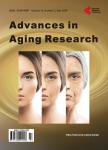Risk assessment of and targeted intervention for falls in the elderly based on the relationship between physical function levels and risk factors for falls
Risk assessment of and targeted intervention for falls in the elderly based on the relationship between physical function levels and risk factors for falls作者机构:Akita Prefectural University Akita Japan Graduate School of Natural Science and Technology Kanazawa University Ishikawa Japan Kanazawa Institute of Technology Ishikawa Japan
出 版 物:《Advances in Aging Research》 (老年问题研究(英文))
年 卷 期:2013年第2卷第3期
页 面:87-93页
学科分类:1002[医学-临床医学] 100214[医学-肿瘤学] 10[医学]
主 题:Locomotive Organ Impairment Fall Experience ADL Competence
摘 要:Although fall experience is an important predictor of future falls, clinicians place too much emphasis on this factor during risk assessment of falls. This study aimed to determine individuals with high and low fall risk on the basis of the relationship between physical function levels [competence in performing activities of daily living (ADL)] and risk factors for falls (fall experience, locomotive organ impairment, and potential for falling). Participants were 1057 independent community-dwelling elderly individuals. ADL competence and the status of risk factors for falls were evaluated using a questionnaire and the relationship between the two was determined. We calculated the cumulative relative frequency curves for ADL scores after categorizing the participants into several groups according to combinations of risk factors and analyzed those combinations that showed wide individual differences in the cumulative relative frequency curves. Intergroup differences when the participants were categorized on the basis of fall experience alone were small;however, those when the participants were categorized on the basis of locomotive impairment and potential for falling were much greater. On classifying the participants into eight groups on the basis of locomotive organ health, fall risk, and fall experience, we found that fallers with locomotive impairment and a high fall risk exhibited the lowest ADL scores while fallers without locomotive impairment and with a low fall risk exhibited the highest ADL scores. Fall risk assessments that are overtly dependent on fall experience are fundamentally limited. Grouping key risk factors can help in determining target groups, including highrisk fallers, low-risk fallers, and high-risk nonfallers, which require primary preventive measures among the community-dwelling elderly.



